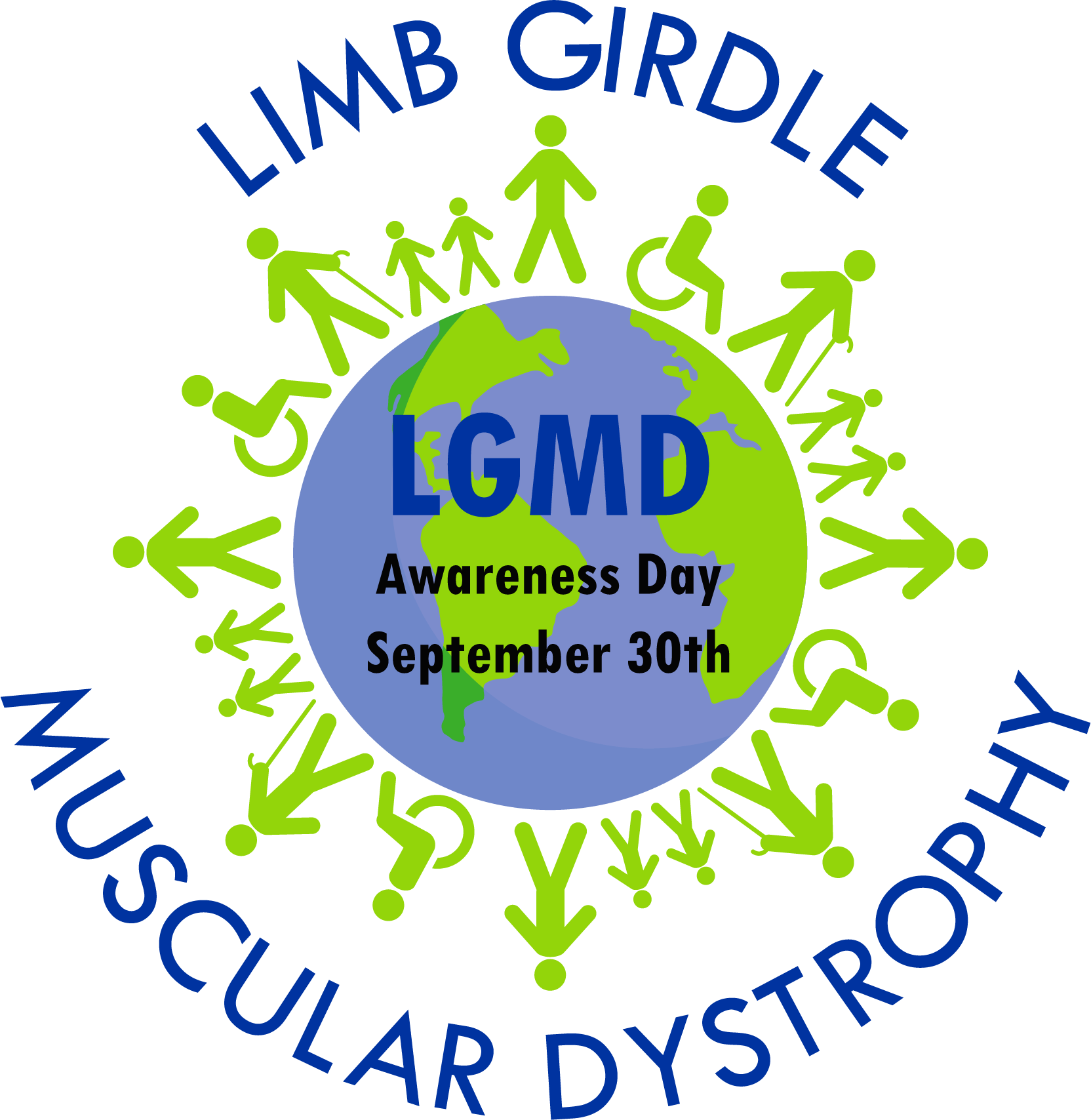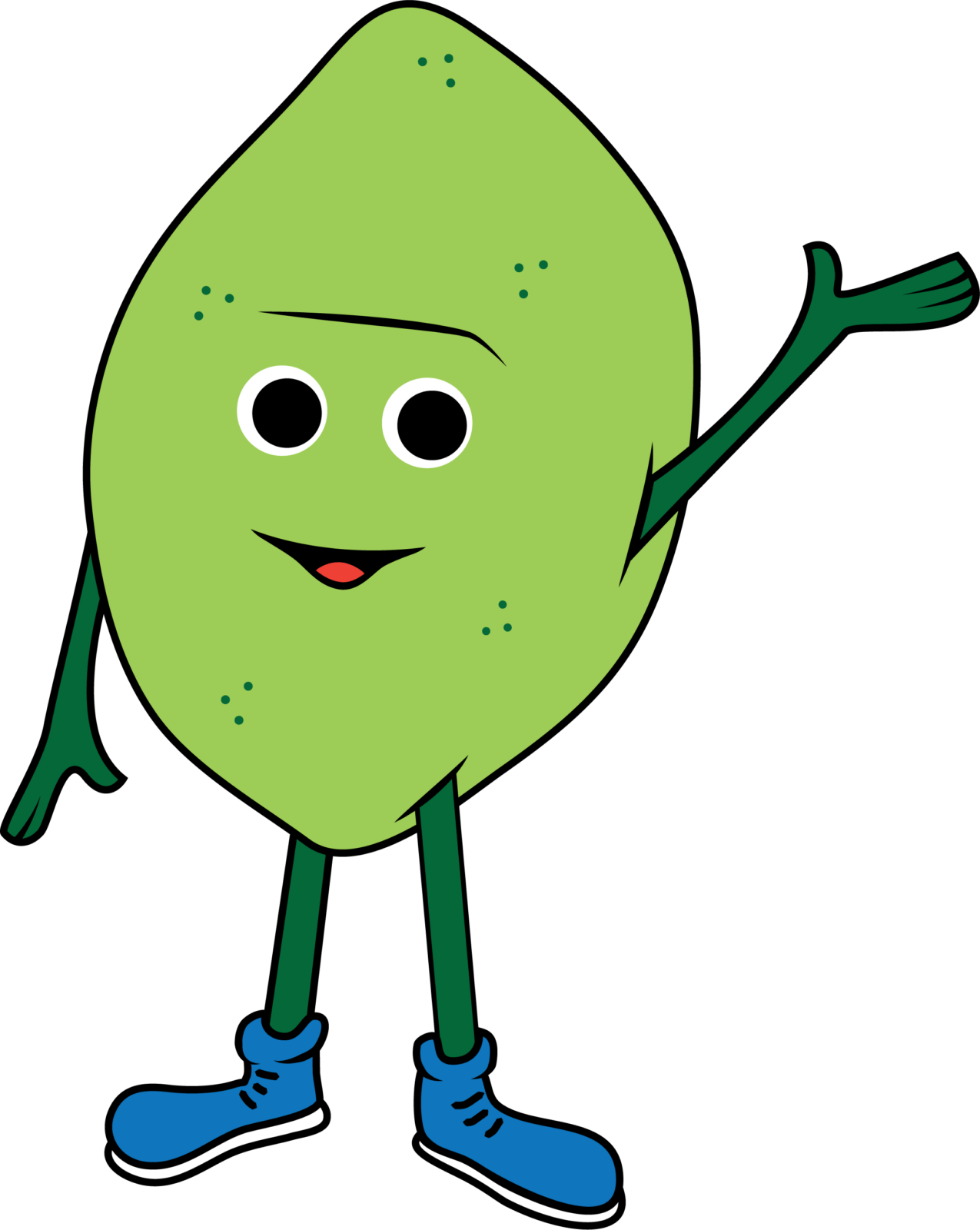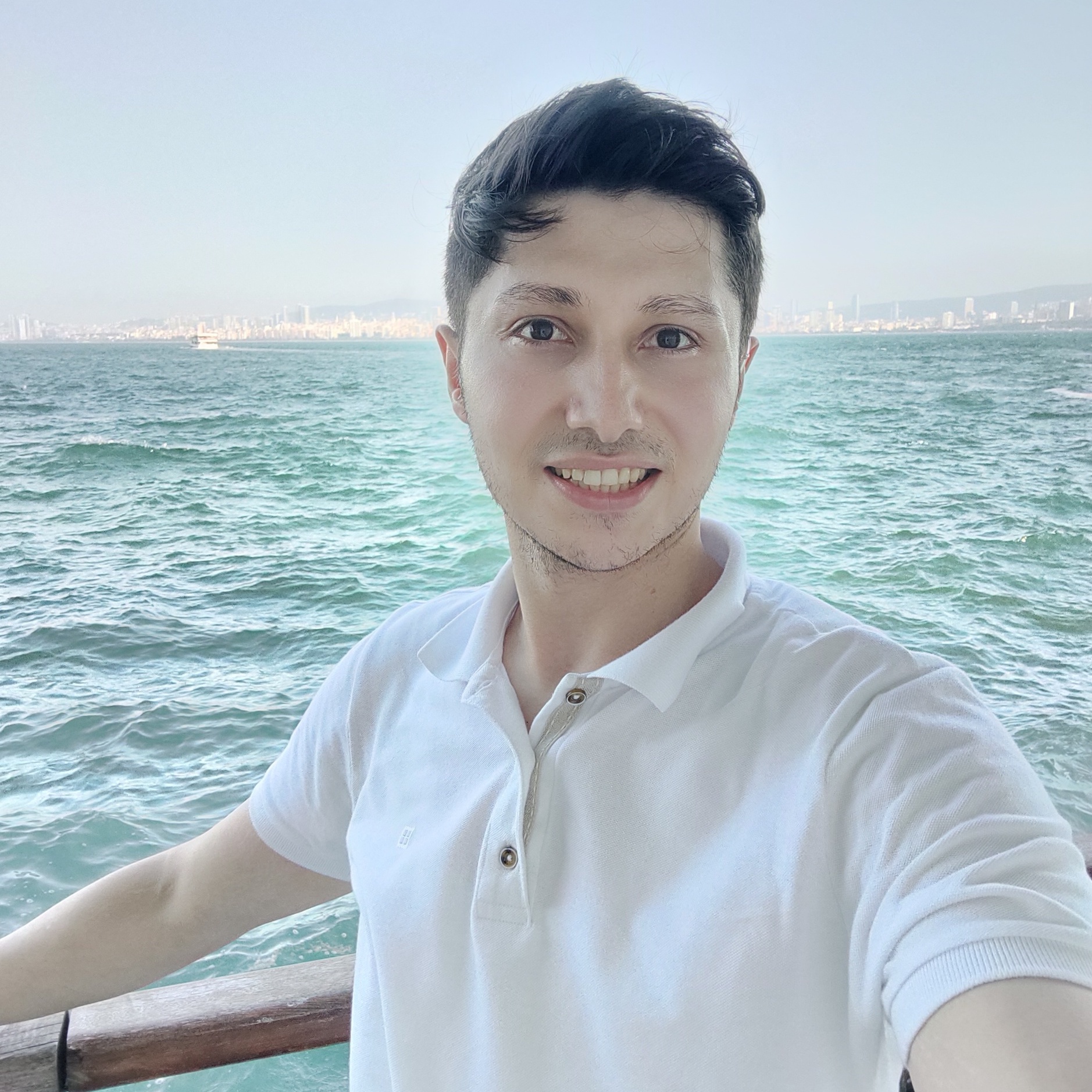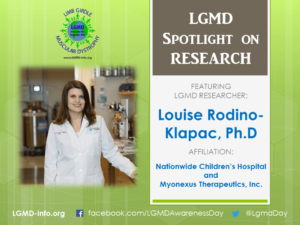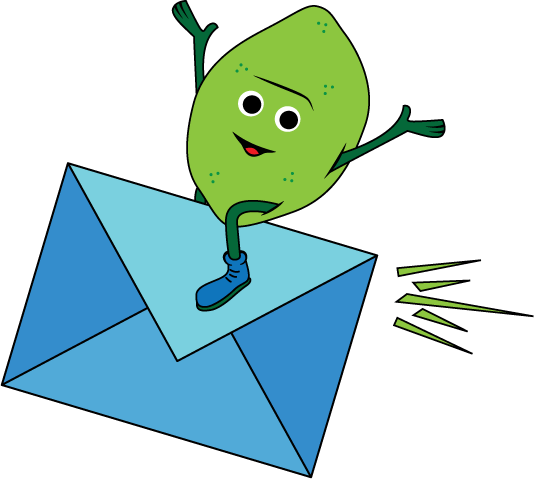LGMD RESEARCHER: Louise Rodino-Klapac, Ph.D
LGMD “Spotlight Interview on Research”
LGMD Researcher: Louise Rodino-Klapac, Ph.D
Affiliation: Nationwide Children’s Hospital and Myonexus Therapeutics, Inc.
Role or Position: Associate Professor (NCH) and Chief Scientific Officer (Myonexus)
What education and training did you have to arrive at your current position?
I have a Ph.D. in molecular genetics studying neuromuscular development. I then did a post-doctoral fellowship in gene therapy at nationwide children’s hospital with Jerry Mendell as my mentor.
What led you to follow a career in research and in studying muscular dystrophy in particular?
I knew I wanted to be a researcher from a young age. I was fascinated by genetics and how defective genes could cause disease. I studied neuromuscular development for my graduate work and I was interested in building on that knowledge to develop treatments for muscle disease. Fortunately, muscular dystrophy research is an area of emphasis at Nationwide Children’s affording me the opportunity to fulfill my goals.
What topics are you studying?
I develop gene therapy treatments for Limb Girdle and Duchenne Muscular Dystrophy and translate these treatments to clinical trials. My laboratory also studies the disease mechanisms of Limb Girdle Muscular Dystrophies.
How will your work help patients? Is it more scientific in nature or might it become a treatment for LGMDs or MDs in general?
Our work is directly applicable to patients. We have ongoing to impending clinical trials for several forms of LGMD (2B, 2D, 2E) and planning clinical studies for other subtypes. We are very optimistic that gene replacement will be a meaningful treatment for MDs.
What would you like patients and others interested in LGMD to know about research (your own projects and about the field in general)?
It’s a very exciting time for LGMD research. Improvements in genetic testing and successes in gene therapy in other neuromuscular disorders have accelerated research and clinical trials for LGMD. We can rapidly apply what we learn from studying one form of LGMD to another.
What inspires you to continue working in this field?
Patients are my biggest inspiration. It is so rewarding to know that all the hard work we are doing to bring treatments to the clinical will hopefully benefit patients in a very meaningful way!
How can patients encourage you and help your work?
Hearing stories from patients (both stories of hope and challenges) is extremely helpful. It helps us as researchers to know the challenges unique to each specific disease to tailor treatments if possible. Moreover, it is a constant source of motivation to keep working hard knowing there is a huge team of supporters behind you!

